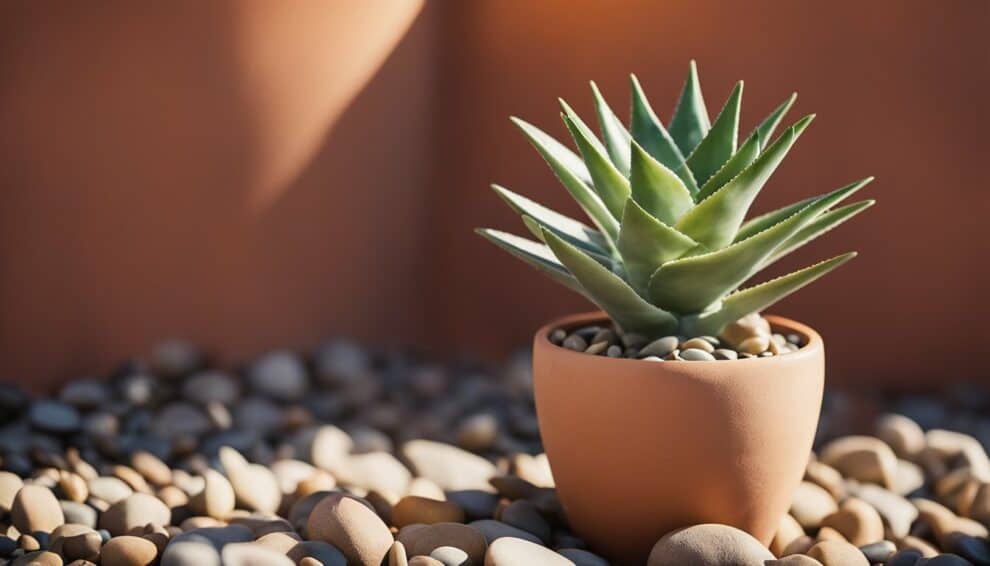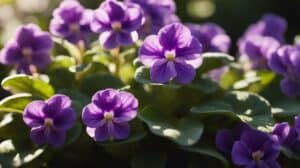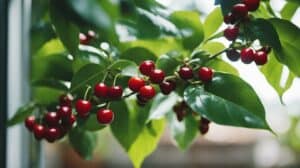Aloe polyphylla, commonly known as Spiral Aloe, is a unique and beautiful plant that is native to the mountains of Lesotho in Southern Africa.
Its striking spiral shape and symmetrical rosette of leaves make it a popular choice for gardeners and collectors alike.
However, cultivating this plant can be challenging, especially for beginners.

In this beginner’s guide, we will provide you with all the information you need to successfully grow and care for Spiral Aloe.
From selecting the right soil and pot to watering and fertilizing, we will cover all the essential aspects of cultivating this stunning plant.
Whether you are a seasoned gardener or just starting out, this guide will help you grow healthy and thriving Spiral Aloe plants that will be the envy of your friends and neighbors.
Understanding Aloe Polyphylla

Characteristics of Spiral Aloe
Aloe polyphylla, also known as Spiral Aloe, is a fascinating succulent plant that is native to the mountains of Lesotho in southern Africa.
It is a highly sought-after plant among collectors due to its unique spiral shape, which is created by its leaves that grow in a clockwise or counterclockwise direction.
The leaves of Spiral Aloe are thick and fleshy, and they form a rosette that can grow up to 1 foot in diameter.
The plant can reach a height of 2 feet and produces bright red or pink flowers on tall stalks in the summer.
Spiral Aloe is a slow-growing plant and can take up to 5 years to reach maturity.
History and Origin
Spiral Aloe is believed to have originated in the Maluti Mountains of Lesotho, where it grows in rocky, high-altitude areas.
The plant was first discovered by botanist David Hardy in 1915, who was searching for new plant species in the region.
He was struck by the beauty of Spiral Aloe and brought some specimens back to England.
Since then, Spiral Aloe has become a popular plant among collectors and gardeners around the world.
However, due to its slow growth and limited distribution, it is considered a rare and endangered species.
In fact, it is protected by law in Lesotho, and it is illegal to export the plant without a permit.
In summary, Spiral Aloe is a unique and beautiful plant that requires special care and attention to thrive.
Its spiral shape and colorful flowers make it a popular choice among collectors, but it is important to remember that it is a rare and endangered species that should be protected and conserved for future generations.
Cultivation Basics

Choosing the Right Soil
Aloe polyphylla requires well-draining soil that is rich in nutrients.
The ideal soil for spiral aloe cultivation is a mixture of sand, perlite, and peat moss. A soil pH of 6.0 to 7.0 is recommended.
It is important to avoid using heavy clay soil as it can retain too much moisture, which can lead to root rot.
Sunlight and Watering Requirements
Spiral aloe requires bright, indirect sunlight for optimal growth. Direct sunlight can cause sunburn on the leaves.
It is important to water the plant thoroughly but infrequently. Overwatering can lead to root rot, which can be fatal for the plant.
The frequency of watering will depend on the climate and the soil mix used.
During the summer months, the plant may require more frequent watering, while during the winter months, watering can be reduced.
Temperature and Climate Adaptation
Spiral aloe is native to Lesotho, a country in southern Africa, where it grows in high-altitude mountainous regions.
The plant is adapted to cold temperatures and can tolerate temperatures as low as 20°F (-6°C).
In warmer climates, the plant can be grown in partial shade to protect it from excessive heat.
Humidity is not a major concern for spiral aloe, but it is important to ensure good air circulation around the plant to prevent fungal diseases.
By following these basic guidelines for soil, sunlight, watering, and temperature, beginners can successfully cultivate Aloe polyphylla and enjoy the unique beauty of this stunning succulent.
Propagation Techniques
Seed Propagation
Spiral Aloe can be propagated from seeds, but it is not the most common method.
The seeds are usually collected from the plant’s flowers, which can take up to three years to appear.
Once the flowers have bloomed, they will produce seed pods that can be harvested once they have turned brown and dry.
To propagate from seeds, the soil should be moist and well-draining.
The seeds should be sown on the surface of the soil and lightly covered with a thin layer of sand or vermiculite.
The soil should be kept moist, but not waterlogged, and placed in a warm, bright location.
Germination can take up to six weeks, and the seedlings should be transplanted into individual pots once they have developed their first set of true leaves.
Offset Division
The most common propagation method for Spiral Aloe is through offset division.
The plant produces offsets, or “pups,” that grow at the base of the main rosette. These pups can be removed and replanted to create new plants.
To propagate through offset division, the plant should be carefully removed from its pot and the soil should be gently shaken off the roots.
The offsets can be separated from the parent plant by gently pulling them away or using a sharp, sterilized knife to cut them off.
The offsets should be allowed to dry for a day or two before being planted in a well-draining soil mix.
The soil should be kept moist, but not waterlogged, and the plant should be placed in a warm, bright location.
Propagation through offset division is the easiest and most reliable method for cultivating Spiral Aloe.
With proper care and attention, new plants can be grown from offsets and enjoyed for many years to come.
Common Challenges and Solutions

Pest and Disease Management
One of the most common challenges in cultivating Spiral Aloe is dealing with pests and diseases.
The plant is susceptible to a range of issues, including scale insects, mealybugs, spider mites, and fungal infections.
To prevent these problems, it is important to maintain good hygiene by keeping the plant clean and removing any dead or damaged leaves promptly.
If pests or diseases do occur, there are several solutions available.
For example, spraying the plant with a mixture of water and dish soap can help control many types of insects.
Alternatively, using a neem oil-based pesticide can be effective against a range of pests and fungal diseases.
Overcoming Rot and Poor Drainage
Another common challenge when cultivating Spiral Aloe is dealing with rot caused by poor drainage.
This can occur if the plant is kept in a pot without adequate drainage holes or if it is planted in soil that holds too much moisture.
To prevent this problem, it is important to ensure that the plant is planted in well-draining soil and that it is not overwatered.
If the plant does develop rot, it is important to act quickly to prevent further damage.
This may involve removing any affected leaves or even repotting the plant in fresh, well-draining soil.
In severe cases, it may be necessary to cut away the affected parts of the plant and allow it to regrow from healthy tissue.
By being aware of these common challenges and taking steps to prevent and manage them, even beginner gardeners can successfully cultivate Spiral Aloe and enjoy its unique beauty and health benefits.
Frequently Asked Questions

What are the ideal growing conditions for Aloe polyphylla?
Aloe polyphylla thrives in cool, moist, and shaded conditions. The plant prefers a well-draining soil mixture that is rich in organic matter.
It is best to grow Spiral Aloe in a pot or container that is at least 12 inches in diameter to allow enough space for the plant to grow.
How often should I water my Spiral Aloe plant?
It is important to water your Spiral Aloe plant regularly, but not too frequently. The plant should be watered when the top inch of soil is dry to the touch.
During the summer months, the plant may require more frequent watering, while in the winter months, it may require less.
Can Spiral Aloe be grown from seeds, and if so, how?
Yes, Spiral Aloe can be grown from seeds. The seeds should be sown in a well-draining soil mixture and kept moist until they germinate.
It may take several weeks for the seeds to germinate, and the seedlings should be kept in a shaded area until they are strong enough to be exposed to direct sunlight.
What should I do when my Spiral Aloe starts developing pups?
When your Spiral Aloe starts developing pups, you can either leave them attached to the mother plant or remove them and plant them separately.
If you choose to remove them, make sure to do so carefully to avoid damaging the roots.
The pups can be planted in a separate pot or in the same pot as the mother plant.
Are there any special uses for Aloe polyphylla compared to other aloe species?
Aloe polyphylla is primarily grown for its ornamental value, but it is also used in traditional medicine to treat various ailments.
The plant contains a gel-like substance that is rich in vitamins and minerals and is believed to have anti-inflammatory and antibacterial properties.
Is the Spiral Aloe considered a frost-resistant succulent?
Yes, the Spiral Aloe is considered a frost-resistant succulent and can tolerate temperatures as low as 20°F (-6°C).
However, it is important to protect the plant from excessive moisture during cold weather, as this can cause the roots to rot.














